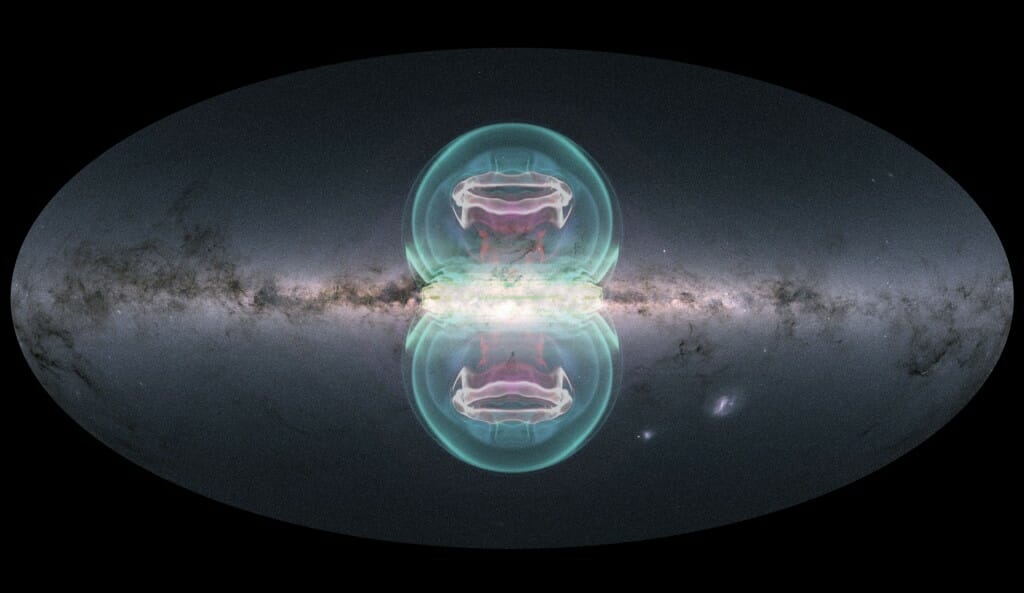
The enormous clouds of material known as the eRosita and Fermi bubbles extend above and below the galactic plane of the Milky Way. NASA/Karen Yang/Mateusz Ruszkowski/Ellen Zweibel
New research reveals the origins of enormous bubbles of material emanating from the center of the Milky Way.
The related structures - known as the eRosita and Fermi bubbles and the microwave haze - are the result of a powerful jet of activity from the supermassive black hole at the center of the galaxy. The study, published March 7 in Nature Astronomy, also shows the jet began spewing out material about 2.6 million years ago, and lasted about 100,000 years.
The work was led by Karen Yang of National Tsing Hua University in Taiwan with University of Wisconsin-Madison astronomer Ellen Zweibel and Mateusz Ruszkowski at the University of Michigan.
The black hole origin of these huge bubbles rules out an alternative model that the expansion of the material was driven by exploding stars. Such a nuclear starburst would last about 10 million years, according to Zweibel, a professor of astronomy and physics at UW-Madison.
"On the other hand, our active black hole model accurately predicts the relative sizes of the eRosita X-ray bubbles and the Fermi gamma ray bubbles, provided the energy injection time is about one percent of that, or one-tenth of a million years," Zweibel says. "Injecting energy over 10 million years would produce bubbles with a completely different appearance. While both the black hole and stellar explosion models were in reasonably good agreement with the gamma ray data, it's the discovery of the X-ray bubbles, and the opportunity to compare the X-ray and gamma ray bubbles, which provide the crucial, previously missing piece."
The enormous structures are nearly 36,000 light-years tall, one-third the diameter of the Milky Way. The eRostia and Fermi bubbles were named for the telescopes that discovered them in 2020 and 2010, respectively.







